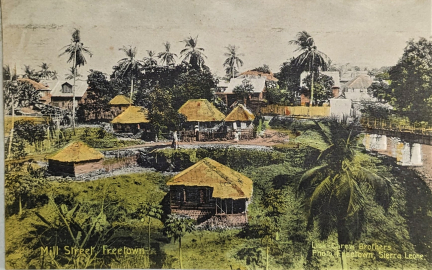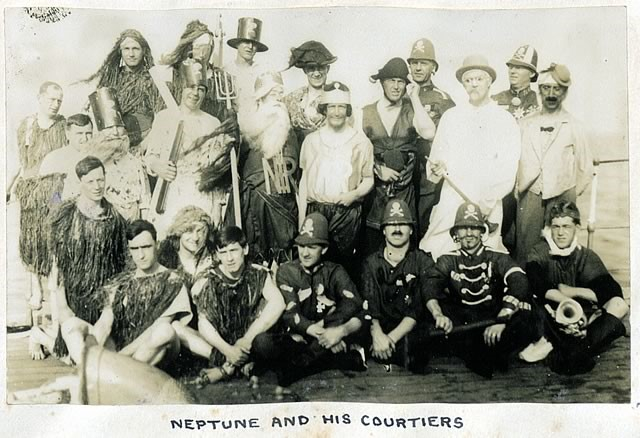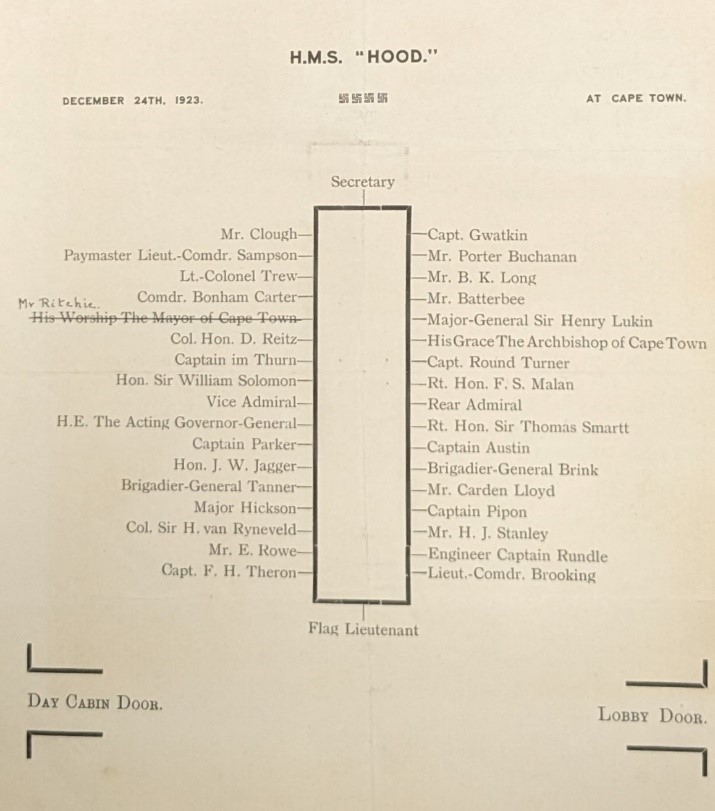British Special Service Squadron 1923 - the first ports of call
- View news filtered by: Interwar
- View news filtered by: Navy Organisation
- View news filtered by: Specialisms
- View news filtered by: Units & Squadrons
- View news filtered by: British Special Service Squadron
- View news filtered by type: Blog

December 8th, At Sea.
At 7am we sighted the West Coast of Africa, but owing to a low lying mist could not plainly discern the entrance to the harbour. (RNM 1988/259)
Just 11 days after leaving Devonport (Plymouth, UK), the Special Service Squadron arrived at Freetown, Sierra Leone. After an Address of Welcome by the Mayor and Corporation of Freetown, the ships spent four days taking on fresh supplies and refuelling. With the seamen and marines of HMS Hood eating 1,400lbs (635 Kg) of bread, 1,000 lbs (453 Kg) of meat and 1,500 lb (680 Kg) of potatoes a day, food supplies had to be carefully managed. Plentiful as the food might have been, it was described as ‘plain fare ... an English custom sometimes carried too far. Doubtless a Frenchman could cook it better.’ (Scott O’Connor).
The ships were open to the public on the Tuesday afternoon, but shore leave was generous and the weather warm after the foggy departure from England. The squadron hosted a dance for the mayor and local dignitaries on board Hood and gave a search-light display for the local population, departing on 13 December 1923 towards South Africa.
The Squadron crossed the Equator on Saturday 15 December with the traditional ceremony of ‘Crossing the Line’. One of the oldest traditions in the service, dating back to the Sailing Navy, the ‘Crossing the Line’ tradition dictates that any ship crossing the Equator must pay its respects to the Lord of the Seas, King Neptune, to gain his acceptance. Breaking the routine of gunnery, searchlight practice and testing communications, the custom combines social entertainment with team building. King Neptune’s staff go around the ship the night before to issue the summons to attend.
0900 was the starting of the fun, Neptune and his wife seated themselves and watched the 'land-lubbers' go through their sacred waters. (RMM 2015/50/1)

The ceremony involves sailors being tested to ensure they are capable of 'handling rough seas' with the tradition of being ‘bathed’, or unceremoniously dunked in a tub of water as part of the ceremony. Each member ‘Crossing the Line’ for the first time receives a certificate and there can be other embellishments to the ceremony. On board HMS Delhi, Captain Pipon was presented with the ancient order of "The Kippered Herring".
On 22 December the Squadron arrived at Cape Town, the Light Cruisers mooring inside the Breakwater, and the big ships in the bay about a mile and half from the city. During the morning Vice-Admiral Field, in overall command of the cruise, paid his official visit to the Acting Governor General. Many of the crew from HMS Hood’s crew participated in a ceremonial march through Cape Town on 24 December.
‘Showing the Flag was performed for the first time today…Governor General taking the salute, this seemed to delight the people for they waved flags and cheered quite gayly.’ (RMM 2015/50/1)
The bands and flag waving may have appeared cheerful. The phrase ‘showing the flag’ reflects the British aim to maintain political and military control, but this view was not shared by everyone in the Union of South Africa, a self-governing dominion. For this reason, some of the Afrikaaner community did not engage with the visit and the Afrikaans newspaper, Die Burgher, purposefully did not cover the event. Prime Minister Jan Smuts also gently declined to travel from Pretoria to greet the Squadron. As historian John C Mitcham notes:
Ultimately the appearance of the navy in the far-flung ports of the empire stimulated widespread public debates about race, identity, and colonialism, and challenged the intended narrative of imperial unity. (Mitcham, 2019).
Despite this, the fleet spent Christmas in South Africa and on 26 December the ships opened to public visitors, receiving around 2000 people. The Squadron Ball took place on HMS Hood in the evening, featuring included local dignitaries including Colonel van Ryneveld, founder of South African Air Force (SAAF) and officers from the other ships.

On 2 January 1924, the fleet sailed for Mossel Bay, East London and Durban. Check back for the next blog which will continue to explore the Squadron’s progress and reception across the different ports in the British Empire.
References
Mitcham, John C. The 1924 Empire Cruise and the Imagining of an Imperial Community. Britain and the World, March 2019, vo. 12, No. 1 : pp. 67-88
Scott O'Connor, Vincent Clarence. The Empire Cruise. Riddle, Smith & Duffus, 1925
RMM 2015/50/1 Diary of Bugler R Newman, HMS Repulse
RNM 1987/497/26. Private diary kept by William Bishop of the commission of HMS Danae
RNM 2015/175/1 Scrapbooks of Charles Round-Turner
Wessels, Andre. (March 2022) The South African Navy 1922-2022: A very brief history. Accessed 8 December 2023.